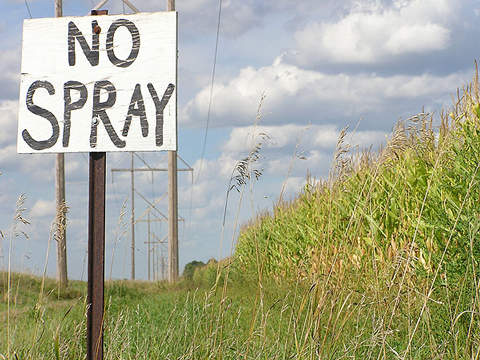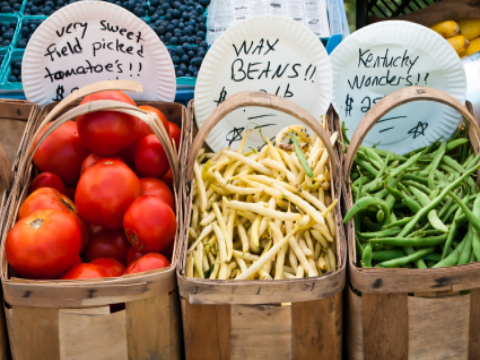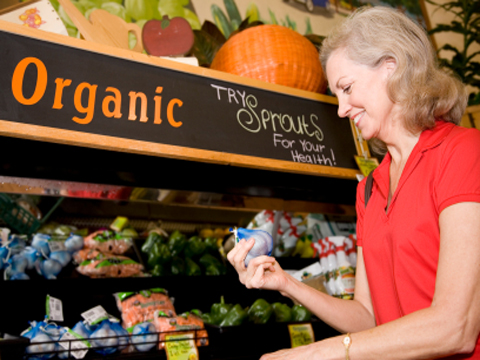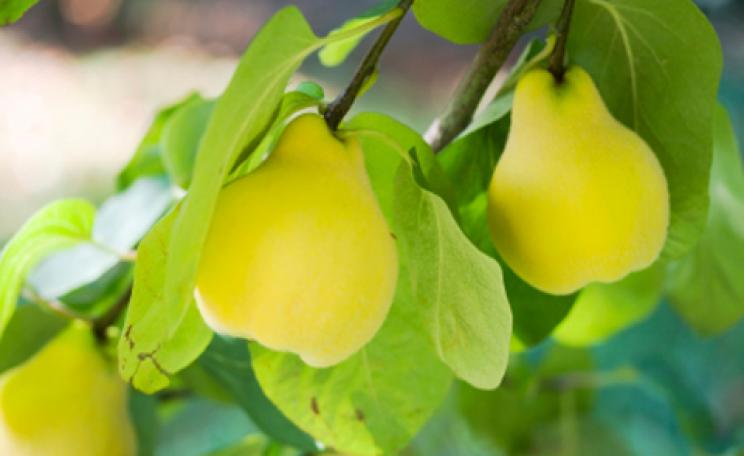Dear Ruth,
I’ve always tried to buy organic produce but it seems a bit odd buying tomatoes from Peru when there are varieties available here. Should I buy the organic version anyway – even if it has come a long way – or should I switch to conventionally grown, if it’s produced here. It’s all a bit confusing!
Alice, Wiltshire
 Alice, I totally understand how you feel and it’s an issue that I’ve spent a lot of time trying to fathom. Of course, buying produce that’s both local and organic is the best choice, but unfortunately, it isn’t always available. Depending on where you shop, local is usually a better bet, particularly if you’re buying in a farmers’ market or in your local farm shop. A local greengrocer is also a good bet, but make sure you check it out first to ensure they are sourcing locally, and where possible, stocking organic. It’s also good to bear in mind that for some small farmers, the cost of organic certification is prohibitively high, so in certain cases, produce that isn’t labelled organic, actually is. Confusing, yes, but definitely worth inquiring about.
Alice, I totally understand how you feel and it’s an issue that I’ve spent a lot of time trying to fathom. Of course, buying produce that’s both local and organic is the best choice, but unfortunately, it isn’t always available. Depending on where you shop, local is usually a better bet, particularly if you’re buying in a farmers’ market or in your local farm shop. A local greengrocer is also a good bet, but make sure you check it out first to ensure they are sourcing locally, and where possible, stocking organic. It’s also good to bear in mind that for some small farmers, the cost of organic certification is prohibitively high, so in certain cases, produce that isn’t labelled organic, actually is. Confusing, yes, but definitely worth inquiring about.
Supermarkets, although convenient, are a different kettle of fish as their large turnover and economies of scale put huge pressure on farmers to produce more and to do it cheaply. The result is that they end up turning to synthetic fertilisers and pesticides – and lots of them – to boost yields. According to the Soil Association, the production and use of artificial fertilisers are the largest single source of nitrous oxide, a greenhouse gas 310 times more damaging than carbon dioxide. It also takes 108 tonnes of water, one tonne of oil and creates seven tonnes of carbon dioxide just to produce a single tonne of fertiliser. Organic farming uses far less energy and no fertilisers or pesticides. However, while supermarkets do stock organic produce, much of it is sourced from far-flung countries, such as the aforementioned Peruvian tomatoes.
 So which is better? Well, according to the International Air Transport Association (IATA) and the U.N.'s International Panel on Climate Change (IPCC), the aviation industry accounts for only three percent of the world’s greenhouse gas emissions, although this figure has been questioned by the Aviation Environmental Federation (AEF), which says the real figure is closer to 12 percent. Conventional agriculture, on the other hand, accounts for up to 32 percent of emissions, according to the Soil Association. Taking this into account, the answer is that an organic and local combo is the best choice, while organic alone comes second with conventionally-grown local produce bringing up the rear.
So which is better? Well, according to the International Air Transport Association (IATA) and the U.N.'s International Panel on Climate Change (IPCC), the aviation industry accounts for only three percent of the world’s greenhouse gas emissions, although this figure has been questioned by the Aviation Environmental Federation (AEF), which says the real figure is closer to 12 percent. Conventional agriculture, on the other hand, accounts for up to 32 percent of emissions, according to the Soil Association. Taking this into account, the answer is that an organic and local combo is the best choice, while organic alone comes second with conventionally-grown local produce bringing up the rear.
Got a green living conundrum? Email us at asktheecologist@theecologist.org
| READ MORE... | |
 |
GREEN LIVING Top 10…UK farmers’ markets From local specialities to homemade treats, shopping at Britain’s farmers’ markets is a great way to get stuck into premium produce and support local farmers. Jeff Holman rounds up some of the best |
 |
GREEN LIVING Greener grocers: six great ethical supermarkets Not every supermarket is a heartless corporate giant: here are six that are showing Tesco and co how it's done |
 |
GREEN LIVING New series In season now: what to eat in June Asparagus, broccoli and summer squash are just some of the in-season British veg available this month. The Vegetarian Society’s Alex Connel picks his top five |
 |
GREEN LIVING Five reasons why marmite should be at the top of every eco-warrior’s shopping list The Danes might not like it much but marmite is one British institution that’s worth keeping. Here's why, love it or hate it, marmite is an eco-friendly essential |
 |
GREEN LIVING Wild about weeds An underrated source of vitamins; nettles, dandelions and chickweed are a nuisance on the lawn but great to eat. Jeff Holman takes another look |








